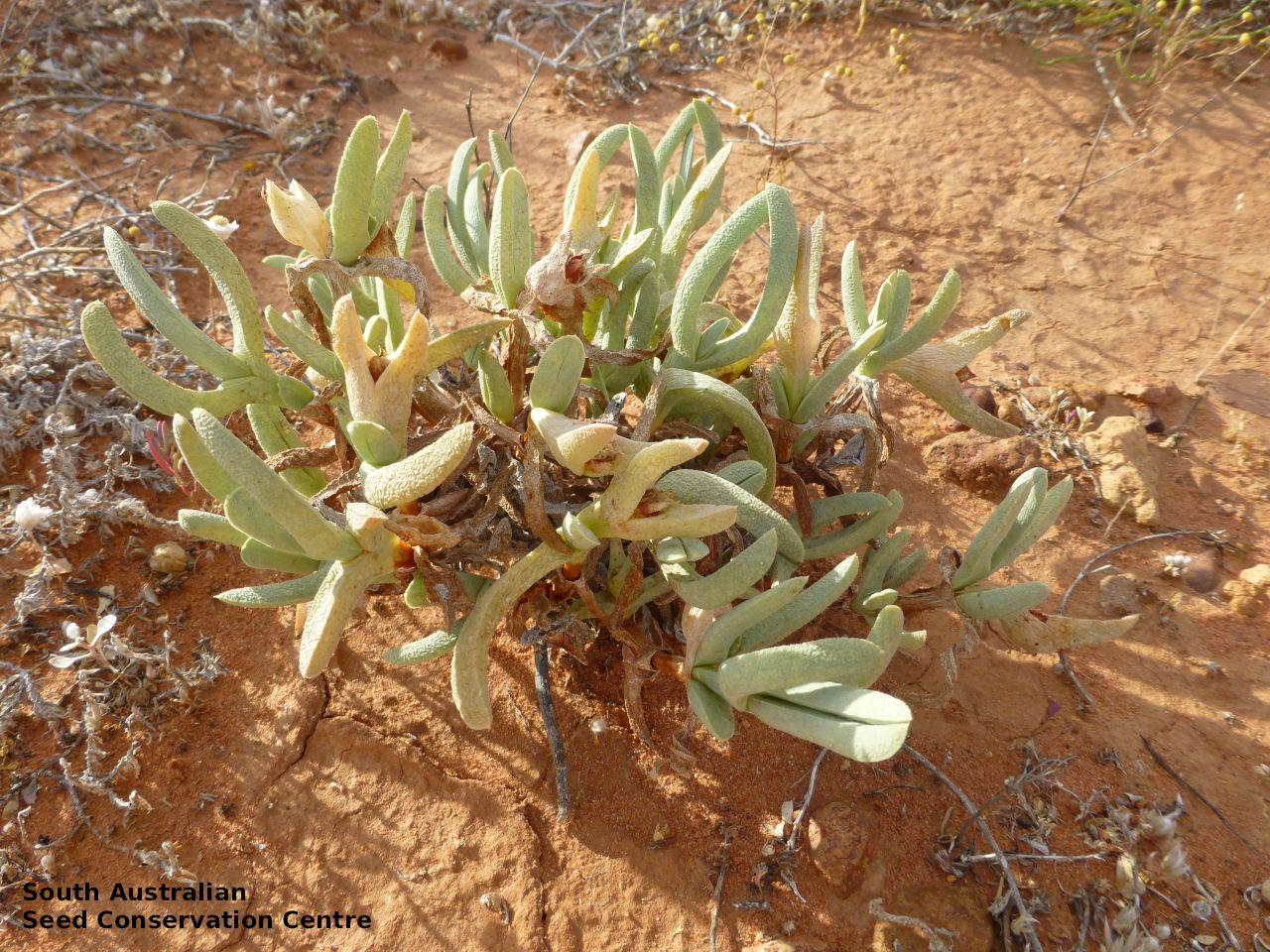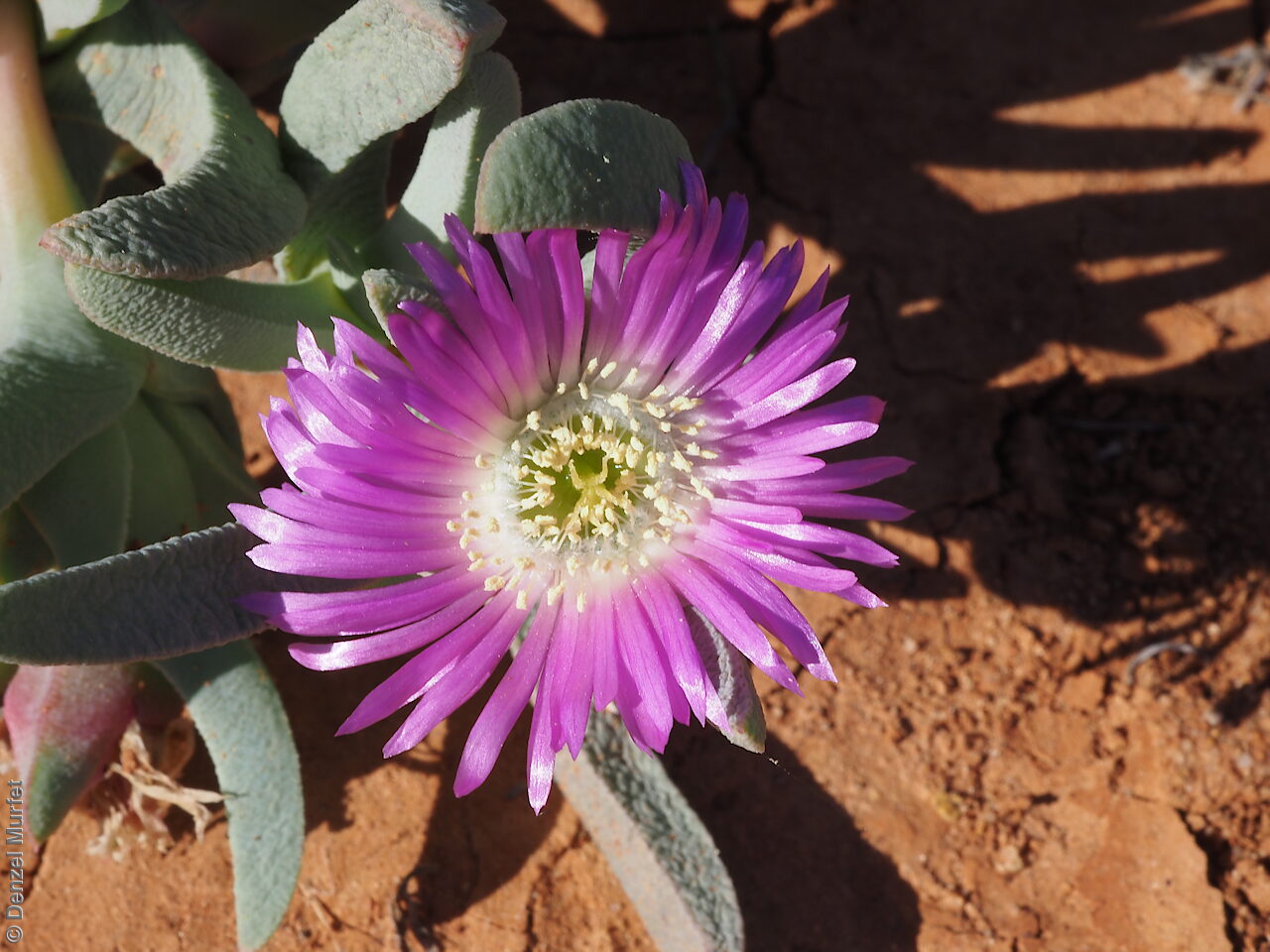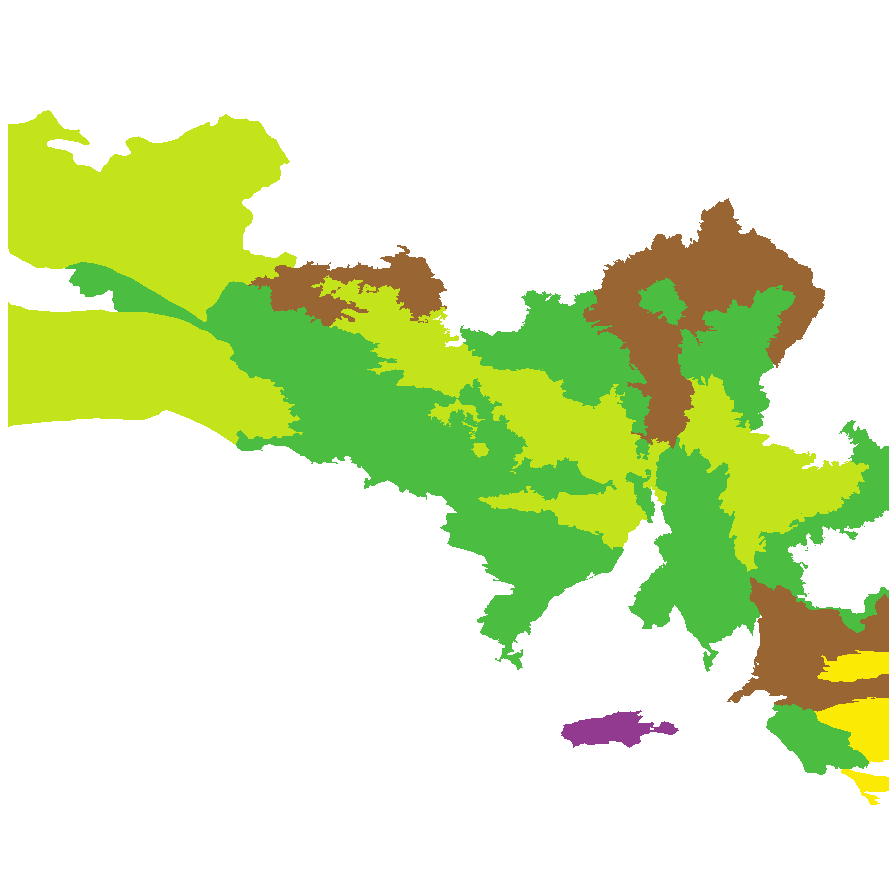Early Noon-flower,
Sarcozona
Display all 14 images














Regional Species Conservation Assessments per IBRA subregion.


Least concern
Near threatened
Rare
Vulnerable
Endangered
Critically endangered
Extinct
Data deficient
Adelaide
Arkaroola
Ceduna
Coober Pedy
Hawker
Innamincka
Marla
Marree
Mount Gambier
Oodnadatta
Renmark
Wudinna
Keith
Yunta
Display IBRA region text
| Tintinara (NCP04) | Naracoorte Coastal Plain | Data Deficient [unusual record, out of range] |
| Kangaroo Island (KAN01) | Kanmantoo | Regionally Extinct [(no records) presumed extinct] |
| Broughton (FLB02) | Flinders Lofty Block | Data Deficient [DD ] |
| Olary Spur (FLB03) | | Data Deficient |
| Southern Flinders (FLB04) | | Data Deficient [DD ] |
| Northern Flinders (FLB05) | | Least Concern [more suitable habitat] |
| Central Flinders (FLB06) | | Near Threatened [localised ] |
| St Vincent (EYB02) | Eyre Yorke Block | Least Concern [In Winninowie CP] |
| Eyre Hills (EYB03) | | Least Concern |
| Eyre Mallee (EYB05) | | Least Concern |
| Murray Mallee (MDD02) | Murray Darling Depression | Rare (IUCN: RA d(i,ii)) (Probable Decline) |
| Lowan Mallee (MDD04) | | Vulnerable (IUCN: VU B2ab(i,ii,iii)) (Probable Decline) |
| Braemer (MDD07) | | Data Deficient |
| Murray Scroll Belt (RIV06) | Riverina | Least Concern [tolerates salinity] |
| Myall Plains (GAW01) | Gawler | Near Threatened [limited habitat] |
| Gawler Volcanics (GAW02) | | Least Concern |
| Gawler Lakes (GAW03) | | Near Threatened [limited habitat] |
| Arcoona Plateau (GAW04) | | Least Concern [undercollected] |
| Kingoonya (GAW05) | | Near Threatened [limited habitat] |
| Torrens (GAW06) | | Rare (IUCN: RA d(ii)) [edge of range, habitat] |
| Roxby (GAW07) | | Least Concern [needs winter rainfall] |
| Commonwealth Hill (GAW08) | | Rare (IUCN: RA d(ii)) [needs winter rainfall] |
| Maralinga (GVD03) | Great Victoria Desert | Near Threatened |
| Yellabinna (GVD06) | | Least Concern |
| Nullarbor Plain (NUL02) | Nullarbor | Near Threatened |
| Yalata (NUL03) | | Near Threatened |
| Hampton (HAM01) | Hampton | Near Threatened |
| Barrier Range (BHC01) | Broken Hill Complex | Data Deficient |
| Murnpeowie (STP03) | Stony Plains | Rare (IUCN: RA d(i,ii)) [edge of range; needs winter rainfall] |
| Tintinara (NCP04) | Naracoorte Coastal Plain | Data Deficient [unusual record, out of range] |
| Kangaroo Island (KAN01) | Kanmantoo | Regionally Extinct [(no records) presumed extinct] |
| 5 of 6 subregions | Flinders Lofty Block | Least Concern , Near Threatened , Data Deficient |
| 3 of 5 subregions | Eyre Yorke Block | Least Concern |
| 3 of 6 subregions | Murray Darling Depression | Rare , Vulnerable , Data Deficient |
| Murray Scroll Belt (RIV06) | Riverina | Least Concern [tolerates salinity] |
| 8 of 8 subregions | Gawler | Least Concern , Near Threatened , Rare |
| 2 of 4 subregions | Great Victoria Desert | Least Concern , Near Threatened |
| 2 of 3 subregions | Nullarbor | Near Threatened |
| Hampton (HAM01) | Hampton | Near Threatened |
| Barrier Range (BHC01) | Broken Hill Complex | Data Deficient |
| Murnpeowie (STP03) | Stony Plains | Rare (IUCN: RA d(i,ii)) [edge of range; needs winter rainfall] |
Botanical art
Kath Alcock paintings: 3
Prior names
Mesembryanthemum praecox
Carpobrotus pulleinei
Sarcozona pulleinei
Common names
Early Noon-flower
Sarcozona
Etymology
Sarcozona from the Greek 'sarkos' meaning flesh and 'zone' meaning involucre; referring to the cup-shaped base of the involucre. Praecox from Latin meaning premature or early-ripening; possibly referring to the species earlier flowering than other pigfaces.
Distribution and status
Found across the central part of South Australia, growing in mallee, woodlands and salt lakes on sandy loam and clay loam. Also found in Western Australia, New South Wales and Victoria. Native. Common in South Australia. Rare in Victoria. Common in the other states.
Herbarium regions: North Western, Lake Eyre, Nullarbor, Gairdner-Torrens, Flinders Ranges, Eastern, Eyre Peninsula, Northern Lofty, Murray
NRM regions: Alinytjara Wilurara, Eyre Peninsula, Northern and Yorke, South Australian Arid Lands, South Australian Murray-Darling Basin
AVH map: SA distribution map (external link)
Plant description
Erect to decumbent perennial succulent to 0.5 m high and 1 m diameter. Leaves fleshy to 10 cm long and 8 mm thick, the uppermost pair commonly enclosing more than half the ovary, surface with fine wrinkles. Flowers large pink daisy-like flowers at the end of stems with no stalk. Flowering between July and October. Fruits are dry brown capsule. Seed embryo type is peripheral.
Seed collection and propagation
Collect seeds between October and January. Collect mature fruits, those that are fat and turning red with brown seeds inside or collect capsules that are brown and dried. If fruits are fresh, break open the fruits and wash the content in water. Drain the liquid leaving behind the seeds. Place the wet seeds onto paper towels and leave to dry. If fruits are dried, rub the fruits with a rubber bung to dislodge the seeds. Use a sieve to separate the unwanted material. Be careful as the seeds are very small. Store the seeds with a desiccant such as dried silica beads or dry rice, in an air tight container in a cool and dry place. Seeds are non-dormant, viable seed should germinate readily.















